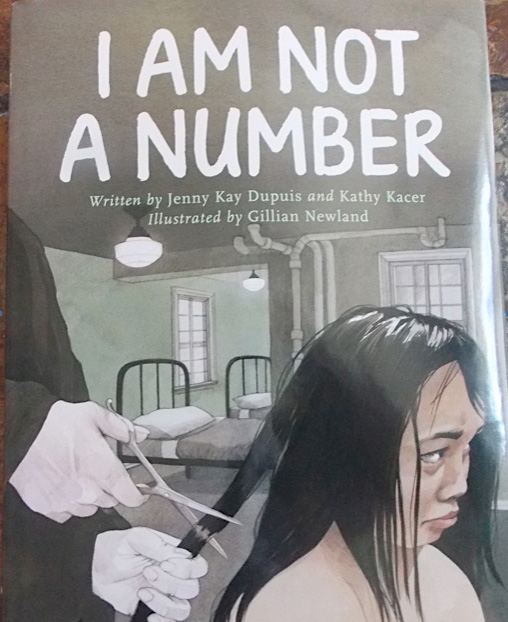Book Review: ‘I am not a number’ creates teachable moments
 Reviewed by Carrie MacKenzie
Reviewed by Carrie MacKenzie
“I Am Not A Number” by Dr. Jenny Kay Dupuis and Kathy Kacer, with illustrations by Gillian Newland, details the real life experiences of a young Indigenous girl, Irene Couchie, at a residential school. Irene Couchie is the grandmother of Dr. Dupuis. This is also her first children’s book, written for 7-11 year olds and was released Sept. 6. This book came out of her desire to share her grandmother’s story and highlight Indigenous issues, creating teachable moments. This I feel was done with great success.
A number of elements make this book a valuable tool for educating children about residential schools. One is the feeling of legitimacy and continuity created by the chronology of the story. It begins with Irene being taken, along with two of her brothers, by the Indian agent from their home to the residential school where they live for nearly a year and ends after summer vacation when the Indian agent returns for the children. This paints a more complete and genuine account of what these Indigenous children and their families went through.
This feeling of authenticity is strengthened further by the authors’ attention to detail. Irene’s treatment at the residential school is not glossed over nor overly detailed; it is done in an age taken appropriate way. This gives the story more of an impact and feels more genuine.
Perspective also turns this book into a useful teaching tool. It is narrated in the first person by eight year old Irene so she is relatable to the book’s intended audience as she is around their age. The imagery and descriptions are presented through Irene’s eyes, a child’s eyes. It is therefore easier for the readers to understand and relate to Irene and her experiences. This can potentially open discussions with children, again creating teachable moments.
The language used by the authors also renders this story suitable for young readers. It is age appropriate and used effectively to show how Irene and her family are feeling and what they are seeing. Language is also used to show the difference in Irene’s relationship with her parents and the nuns at the residential school. This can be seen in the words she uses to describe her parents as compared to those describing the nuns. You read about the pain her parents feel at being powerless to stop their children being taken. Things are described in a way that a child can understand and relate to, getting them to invest emotionally in the story.
Tone is another element that makes this book appropriate for children. It is gentle and powerful at the same time. This haunting story is told in a poignant yet not overly emotional way. The reader feels an emotional connection to Irene but is not overwhelmed by emotions and continues reading and learning about residential schools.
The illustrations by Gillian Newland are beautiful and touching, adding to the story by contributing to the emotional impact of the words. With the words the illustrations help set the tone of the story. The sky is greyer and darker colours are used when illustrating scenes from life at the residential school as compared to those of Irene’s life on the reserve. The illustrations highlight the more moving parts of the story. You can see the emotion on the character’s faces as well as experiencing it through words.
To any one looking for a book to teach children about the history of residential schools “I Am Not A Number” is without hesitation a very powerful and historical teaching tool.
“I am not a number”, By Dr. Jenny Kay Dupuis and Kathy Kacer, Second Story Press, ISBN 978-1-927583-94-4.


